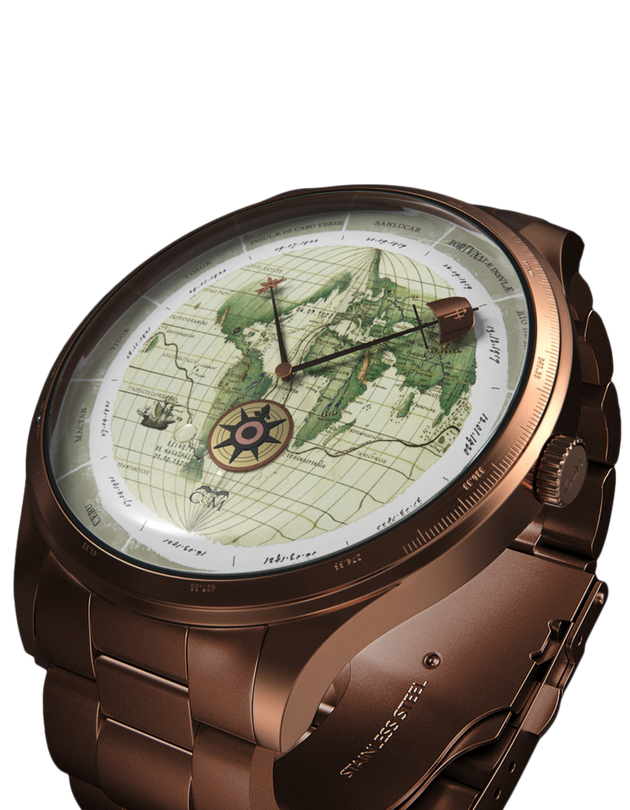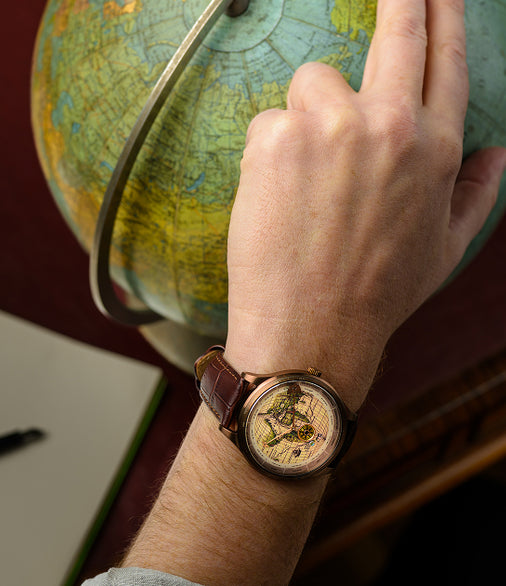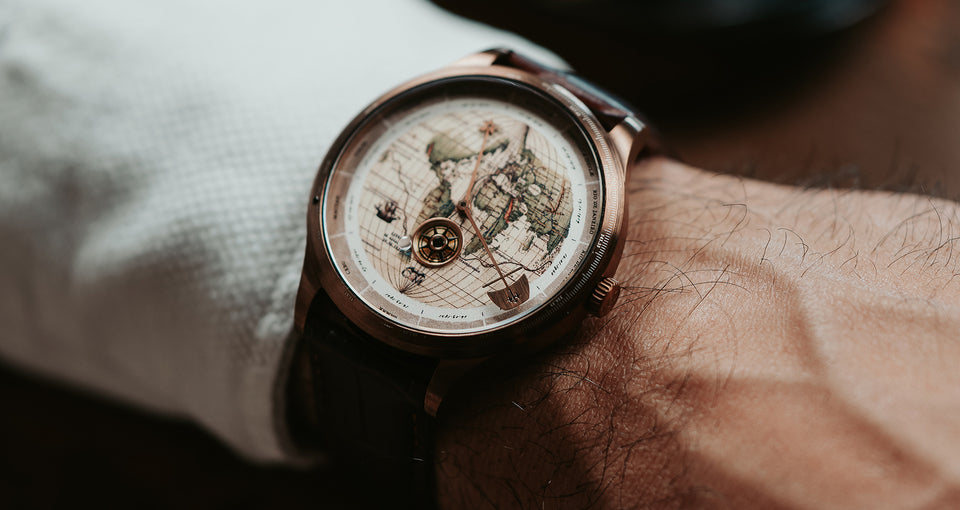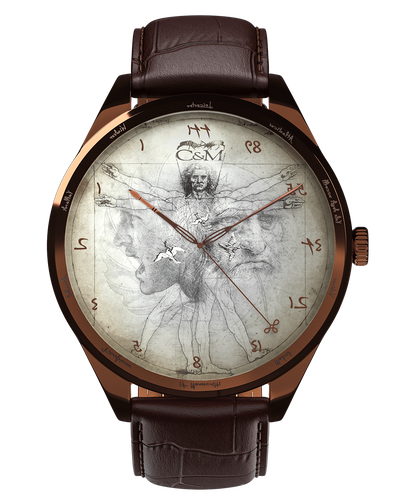The watch in homage to Ferdinand Magellan
On September 20, 1519, Magellan, of Portuguese origin, left the port of San Lucar with a fleet of five carracks financed by Spain with a single objective: to reach the Indies from the west. After more than 600 days of expedition, he died in April 1521, pierced by an arrow during a clash with the warriors of Lapu-Lapu, chief of the island of Mactan, who refused to submit to Spanish authority. Elcano, a Spaniard, then continued the expedition. In 1522, the Victoria returned alone, completing the first circumnavigation by ship.
Discover the symbolism of the Magellan 1521
Hover your mouse or press your thumb over the watch's elements to reveal hidden meanings. Each symbol has been carefully designed to tell a part of its story.
Against all odds, they stayed the course!
The Magellan 1521 collection features a faithful reproduction of a 16th-century map drawn by Battista Agnese. It illustrates the first circumnavigation in history, conducted from 1519 to 1522. This route follows Magellan's route to the Philippines, where he lost his life. This dial pays tribute to the navigators who, at great personal risk, expanded the world's borders and paved the way for great discoveries. The collection is limited to 1,521 numbered copies.
“I was the first to sail around the world. I carried you, Magellan, pioneer among men, across the waters...”
— Maris Pacifici, 1589
Technical description
You might also like
Frequently Asked Questions


















